Portraits of a City: The Scurlock Photographic Studio's Legacy to Washington, D.C.
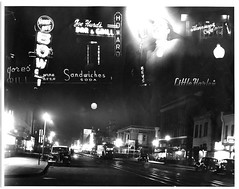 U Street Remembered, composite with Billie Holliday, Scurlock Studios.
U Street Remembered, composite with Billie Holliday, Scurlock Studios.Via the H-DC e-list from John Fleckner, Archivist, National Museum of American History, Smithsonian Institution:
Please enjoy the latest addition to the web pages of the National Museum of American History: "Portraits of a City" presents some 2,000 photographs of Washington DC's African American communities. The images span more than a half century, introducing you to celebrities and everyday citizens, life at home, at work, and in the neighborhoods.
With continuing support from Save America's Treasures and private donors, the Archives Center will continue to build this unique historical resource.
__________
Alas, some of the photos have serious damage, such as those of classes at the H Street neighborhood's Logan School (located on the 200 block of G Street NE), which was the only African-American public school in the neighborhood for decades during the period of segregation, until the late 1940s when demand forced the conversion of Hayes and Taylor Schools from white to black.
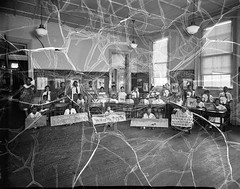 The Scurlocks were pretty interesting. For a time, they produced an African-American themed newsreel shown at movie theaters, in particular the Lichtman chain of African-American theaters in DC. Unfortunately, not one of these newsreels remains.
The Scurlocks were pretty interesting. For a time, they produced an African-American themed newsreel shown at movie theaters, in particular the Lichtman chain of African-American theaters in DC. Unfortunately, not one of these newsreels remains.For a similar collection of photographs, check out the Teenie Harris Archive at Pittsburgh's Carnegie Museum of Art. Mr. Harris took photos for the Pittsburgh Courier, which for decades was the nation's most prominent African-American newspaper.
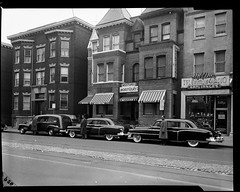 Morton's Funeral Home, circa 1940s (U Street?), Scurlock Studios. (Note the streetcar tracks.)
Morton's Funeral Home, circa 1940s (U Street?), Scurlock Studios. (Note the streetcar tracks.)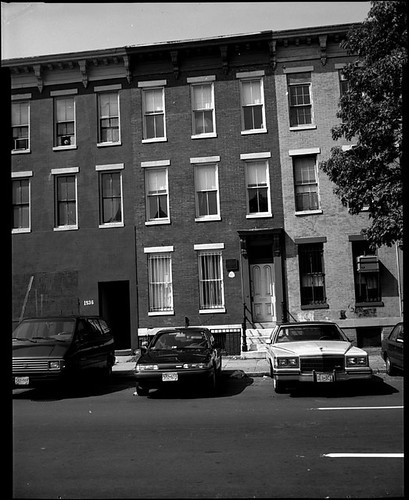 Carter Woodson House, 1500 block of 9th Street NW--in much better condition. Note how the cars are parked.
Carter Woodson House, 1500 block of 9th Street NW--in much better condition. Note how the cars are parked.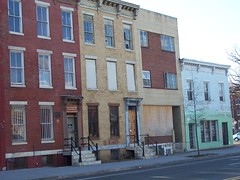 Current condition (after decades of neglect by the then owner--a nearby Church--of this and other properties: 1500 block 9th Street NW, west side (Carter G. Woodson House on far left).
Current condition (after decades of neglect by the then owner--a nearby Church--of this and other properties: 1500 block 9th Street NW, west side (Carter G. Woodson House on far left).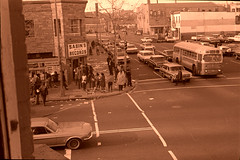 Riots (Civil Disturbances), 1968, 9th and U Streets, NW, Scurlock Studios. People should be able to recognize the WUST Music Hall, now the 9:30 Club, in the upper right corner of this photo.
Riots (Civil Disturbances), 1968, 9th and U Streets, NW, Scurlock Studios. People should be able to recognize the WUST Music Hall, now the 9:30 Club, in the upper right corner of this photo.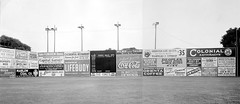 Griffith Stadium advertisments.
Griffith Stadium advertisments.Index Keywords: history



0 Comments:
Post a Comment
<< Home